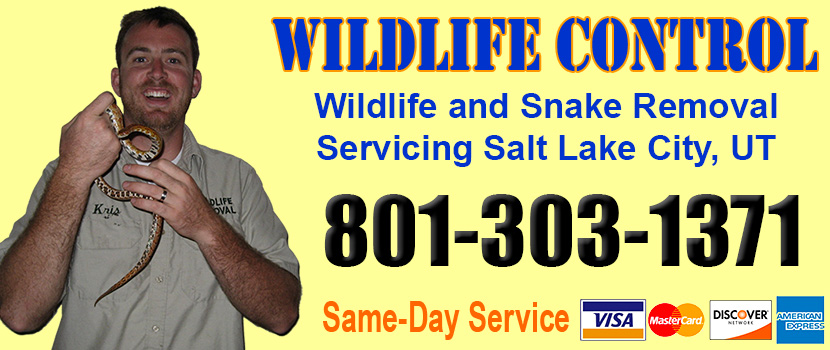
Welcome to saltlakecitysnakes.com! I am David, a snake enthusiast living in Salt Lake City, UT. Many people don't know that Salt Lake City is in fact full of snakes! You just need to know where to find them - they can often be shy and elusive. Some Utah snake species are more common outside of the city limits, in different parts of Salt Lake County UT, but many types of snakes are indeed common in the more urban parts of Salt Lake City. This guide is meant to help educate you about the beautiful snakes of Salt Lake City, and to help you identify the most common snakes of Salt Lake City, as well as the venomous snakes of Salt Lake City that you should learn to recognize and avoid. If you want more detail, click here for my complete list of ALL snake species in Salt Lake City. Remember the following:
- Most snakes of Salt Lake City are harmless and don't want to encounter you
- Venomous snakes exist but are uncommon in Salt Lake City, Utah
- Snakes eat rats and mice and are a valuable part of the Utah ecosystem
- Never kill a snake - if you leave a snake alone, it will leave you alone.
Common Snake Species in Salt Lake City
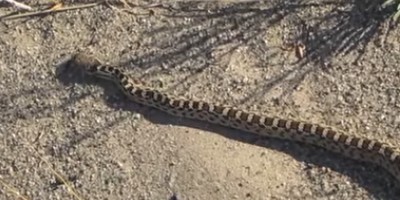 Great Basin Gopher Snake:
The largest species of snake in northern Utah, these non-venomous snakes can reach a length of six feet. Usually, they tend to be closer to four feet. A type of constrictor, in Utah they are often nicknamed blow snakes because they inflate themselves and release a loud hiss of air when threatened. This defensive mechanism, combined with tail shaking, is a form of mimicry meant to resemble a rattlesnake. Primarily active during the day, if it’s too hot out they will be active at night instead. They don’t eat other snakes but do eat lizards, though they prefer rodents. They are yellow and black in coloration to better match their main habitat.
Great Basin Gopher Snake:
The largest species of snake in northern Utah, these non-venomous snakes can reach a length of six feet. Usually, they tend to be closer to four feet. A type of constrictor, in Utah they are often nicknamed blow snakes because they inflate themselves and release a loud hiss of air when threatened. This defensive mechanism, combined with tail shaking, is a form of mimicry meant to resemble a rattlesnake. Primarily active during the day, if it’s too hot out they will be active at night instead. They don’t eat other snakes but do eat lizards, though they prefer rodents. They are yellow and black in coloration to better match their main habitat.
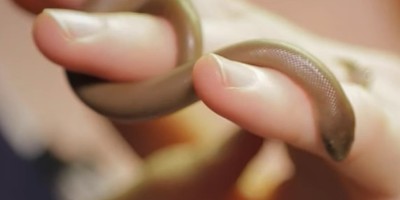 Rubber Boa:
Boas are more widespread than people might realize, and these brown, two-foot-long snakes are an excellent example. Generally active at dusk and dawn, these constrictors have a very high cold tolerance. It’s not uncommon for them to be sunbathing in February amongst a snowy field. That is, if one ever sees them, as these snakes tend to be very reclusive. Fond of forests and elevated terrain, as well as along streams, they feed on just about anything, including small mammals, lizards, eggs, bats, and other snakes if forced.
Rubber Boa:
Boas are more widespread than people might realize, and these brown, two-foot-long snakes are an excellent example. Generally active at dusk and dawn, these constrictors have a very high cold tolerance. It’s not uncommon for them to be sunbathing in February amongst a snowy field. That is, if one ever sees them, as these snakes tend to be very reclusive. Fond of forests and elevated terrain, as well as along streams, they feed on just about anything, including small mammals, lizards, eggs, bats, and other snakes if forced.
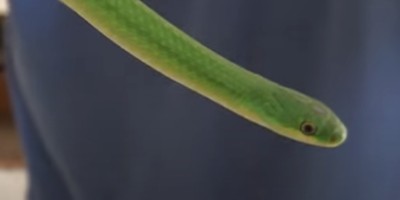 Smooth Green Snake:
These elusive snakes are well camouflaged in their preferred grassy and marshy areas, since they are, as the name suggests, green. Though they prefer to be on solid ground they are very good climbers. Generally, around two feet in length, swamp draining and pesticides have devastated their population. As a result, they’re even more reclusive than before. Like many species of snakes, they hibernate in winter. Their diet consists mostly of insects and spiders, and in general, they eat invertebrates exclusively, making them the friend of all who dislike spiders.
Smooth Green Snake:
These elusive snakes are well camouflaged in their preferred grassy and marshy areas, since they are, as the name suggests, green. Though they prefer to be on solid ground they are very good climbers. Generally, around two feet in length, swamp draining and pesticides have devastated their population. As a result, they’re even more reclusive than before. Like many species of snakes, they hibernate in winter. Their diet consists mostly of insects and spiders, and in general, they eat invertebrates exclusively, making them the friend of all who dislike spiders.
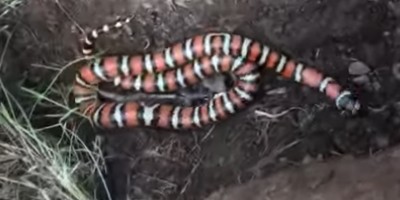 Utah Milk Snake:
There are no coral snakes in Utah, so why these mimicry-minded, brightly colored, non-venomous snakes live in Utah is something of a mystery. Most of their habitat around Salt Lake has been destroyed for housing, and the snakes themselves are rather elusive. Primarily nocturnal, they feed on small mammals, reptiles, birds, and their eggs. Overall, these snakes can be found across North and South America, usually where coral snakes live as well. Like most milk snakes, they field the standard pattern of red, yellow, and black, in the form that denotes them being non-venomous, of course.
Utah Milk Snake:
There are no coral snakes in Utah, so why these mimicry-minded, brightly colored, non-venomous snakes live in Utah is something of a mystery. Most of their habitat around Salt Lake has been destroyed for housing, and the snakes themselves are rather elusive. Primarily nocturnal, they feed on small mammals, reptiles, birds, and their eggs. Overall, these snakes can be found across North and South America, usually where coral snakes live as well. Like most milk snakes, they field the standard pattern of red, yellow, and black, in the form that denotes them being non-venomous, of course.
Venomous Snake Species in Salt Lake City
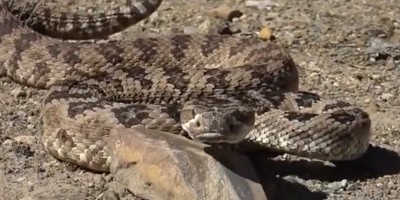 Great Basin Rattlesnake:
The only venomous snake in the Salt Lake area of serious concern to humans, these rattlers are around three to four feet in length. Fond of hillsides, they can live as high as 8,000 feet above sea level. One of the more even-tempered rattlers, they are rarely aggressive and their venom isn’t as toxic as others of their kind. Obviously, caution is still required if found. They are protected by state law and are often brown or tan in coloration, but it tends to vary based on location.
Great Basin Rattlesnake:
The only venomous snake in the Salt Lake area of serious concern to humans, these rattlers are around three to four feet in length. Fond of hillsides, they can live as high as 8,000 feet above sea level. One of the more even-tempered rattlers, they are rarely aggressive and their venom isn’t as toxic as others of their kind. Obviously, caution is still required if found. They are protected by state law and are often brown or tan in coloration, but it tends to vary based on location.
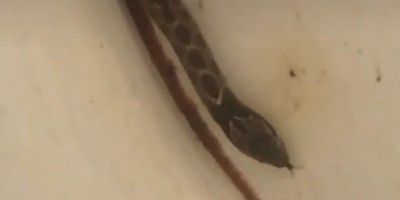 Night Snake:
Extremely elusive and often under two feet in length, these tan snakes are, as the name suggests nocturnal by nature. They are venomous, fielding rear fangs unlike the front folding fangs of vipers like rattlers. Due to their small size, they are not dangerous to humans and are rather docile in any case. These snakes feed mostly on lizards, though they will also eat frogs, eggs, and even rattlesnakes. If threatened they will rear and shake their tales, imitating rattlers and their more toxic venom to ward off danger. Generally, in fact, mimicking a rattlesnake is a common defensive mechanism for desert snakes, as various gopher snakes will do this as well.
Night Snake:
Extremely elusive and often under two feet in length, these tan snakes are, as the name suggests nocturnal by nature. They are venomous, fielding rear fangs unlike the front folding fangs of vipers like rattlers. Due to their small size, they are not dangerous to humans and are rather docile in any case. These snakes feed mostly on lizards, though they will also eat frogs, eggs, and even rattlesnakes. If threatened they will rear and shake their tales, imitating rattlers and their more toxic venom to ward off danger. Generally, in fact, mimicking a rattlesnake is a common defensive mechanism for desert snakes, as various gopher snakes will do this as well.
If you're unsure, you can email me a photo of the snake at info@saltlakecitysnakes.com and I will email you back with the snake's species. If you found a snake skin, read my Found a Skin? page, and you can email me a photo of the skin, and I'll identify the snake for you. If you need professional Salt Lake City snake removal help, click my Get Help page, or see the below website sponsor I found, who provides that service.
Remember, the term is not poisonous snakes of Salt Lake City, it's venomous snakes of Salt Lake City. Poison is generally something you eat, and venom is injected into you. That said, dangerous snakes are very rare in Salt Lake City. The few venomous snakes of Salt Lake County are rarely seen. But they are commonly misidentified, so learn about all the snake species of Salt Lake City in order to correctly identify them. These snakes are usually also found in the surrounding towns of West Valley City, South Jordan, Sandy, West Jordan, Murray, Midvale, South Salt Lake, Taylorsville, Millcreek, Herriman, Cottonwood Heights, Riverton, Magna, Holladay, Kearns, Alta, Copperton, Emigration Canyon, White City, Granite, and the surrounding areas.
Read our article about:
Do snakes eat birds?
saltlakecitysnakes.com domain and hosting costs made possible by the generous support of this sponsor:
